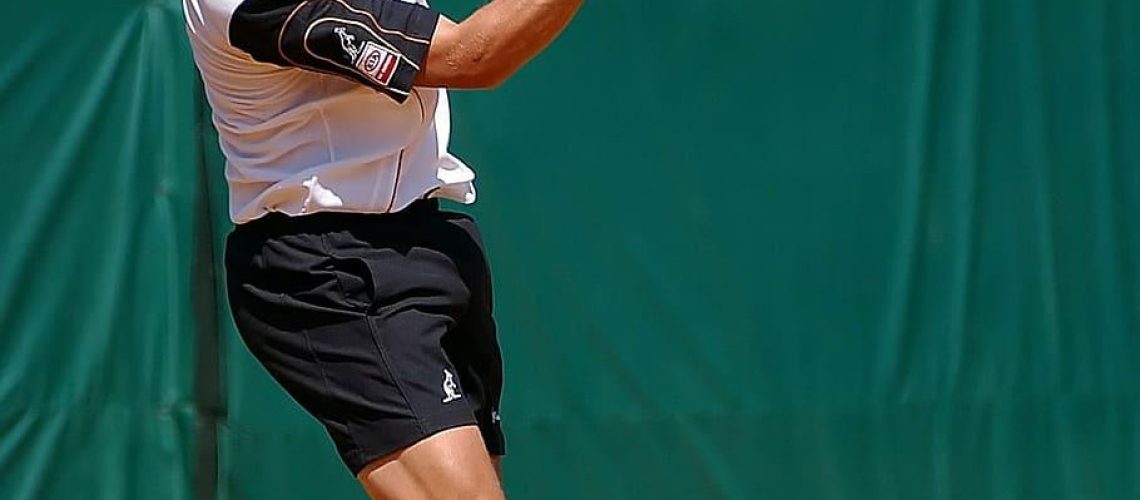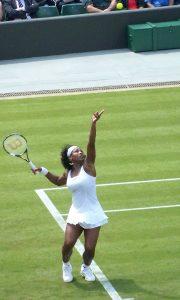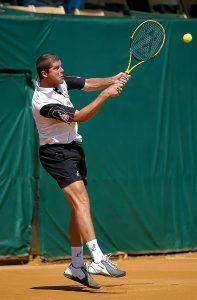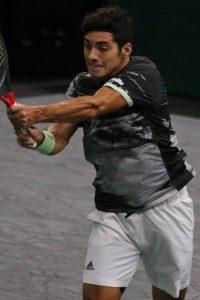We may earn money or products from the companies mentioned in this post.
Introduction to Table Tennis
Table tennis, also known as ping pong, is a fast-paced racket sport that is enjoyed by millions of players around the world It involves two or four players who hit a lightweight ball back and forth across a table divided by a net The objective is to score points by making the ball bounce twice on the opponent’s side of the table without them being able to return it
Definition of Table Tennis
Table tennis originated in England during the late 19th century as an indoor version of lawn tennis It quickly gained popularity due to its accessibility and fast-paced nature The game was initially played with makeshift equipment until proper paddles and balls were developed specifically for table tennis
In modern-day table tennis, players use specialized rubber-coated paddles and a celluloid ball that weighs only 27 grams The small size of the playing area requires quick reflexes, precise hand-eye coordination, and strategic thinking
Comparison with Other Racket Sports
While table tennis shares similarities with other racket sports like tennis, badminton, and squash, it has its own unique characteristics that set it apart
Tennis: Unlike traditional tennis where players have more space to move around on a larger court, table tennis demands agility within a confined area The smaller playing surface makes rallies faster and requires lightning-fast reactions from players
Badminton: Although both table tennis and badminton are played indoors with lightweight projectiles, they differ in terms of speed and power While badminton focuses on longer rallies with slower shuttlecocks, table tennis emphasizes quick exchanges at high speeds over shorter distances
Squash: Squash involves hitting a small rubber ball against walls using rackets within a confined court While both squash and table tennis require nimble footwork and precise shots, the pace of table tennis is much faster, with players engaging in rapid-fire exchanges
In conclusion, table tennis offers a unique and thrilling experience compared to other racket sports Its fast-paced nature, quick reflexes, and strategic thinking requirements make it an exciting game to watch and play Whether you’re a casual player or a competitive athlete, table tennis provides endless opportunities for fun and improvement So grab a paddle, find a partner, and get ready to embark on an exhilarating journey into the world of ping pong!
Equipment and Setup of Table Tennis

The Table Tennis Table
When it comes to table tennis, the table is the centerpiece of the game It’s where all the action happens The standard dimensions of a table tennis table are 9 feet long, 5 feet wide, and 25 feet high These measurements ensure a fair playing field for both players Additionally, the table has distinct markings that help during gameplay There are white lines on each side of the table, dividing it into halves and quarters, allowing for precise shots and strategies
In terms of construction materials, top-quality tables are usually made from medium-density fiberboard (MDF) or solid wood MDF tables offer a smooth surface that allows for consistent bounces, while solid wood tables provide excellent durability
Table Tennis Rackets (Paddles)
A table tennis racket, also known as a paddle or bat, is an essential tool for every player A racket consists of three main components: the blade, rubber, and sponge The blade forms the foundation of the racket and is typically made from wood or composite materials
The rubber covers both sides of the blade and plays a crucial role in generating spin and control over the ball There are different types of rubbers available on rackets: inverted, pips-out (short or long), and anti-spin rubbers Inverted rubbers have a smooth surface with inward-facing pimples that enhance spin control Pips-out rubbers have outward-facing pimples that provide more speed but less spin potential Anti-spin rubbers have short inward-facing pimples that reduce spin from opponents’ shots
Players often customize their rackets according to their playing style and preferences by choosing specific combinations of blades and rubbers to optimize their performance on the table
Table Tennis Balls
The table tennis ball is a small but vital component of the game Traditionally, table tennis balls were made of celluloid, which provided a distinct sound and bounce However, in recent years, plastic balls have become more common due to safety concerns regarding celluloid’s flammability
When it comes to ball quality, there is a rating system based on three stars Three-star balls are of superior quality and are used in professional tournaments Two-star and one-star balls are suitable for recreational play or practice sessions
Other Necessary Equipment
In addition to the table, rackets, and balls, there are a few other essential pieces of equipment that every table tennis player should have The first is the net assembly, which includes the net itself, posts, and clamps to secure it to the table This ensures that the net remains taut throughout gameplay
Furthermore, players should invest in shoes specifically designed for table tennis These shoes provide optimal grip on the playing surface while allowing for quick movements and agility during matches They help players maintain stability and prevent slipping or sliding during intense rallies
Rules And Regulations Of Table Tennis

Table tennis, also known as ping pong, is a fast-paced and exciting sport that requires agility, precision, and quick reflexes Understanding the rules and regulations of table tennis is essential for players to enjoy a fair and competitive game Let’s dive into the basic rules that govern this thrilling sport
Points Scoring System (11 points)
In table tennis, each game is played up to 11 points To win a game, a player must reach 11 points first while maintaining at least a two-point lead over their opponent For example, if the score is 10-10, the game continues until one player gains a two-point advantage
The serving player must alternate every two points scored This means that both players get an equal opportunity to serve throughout the match, ensuring fairness in gameplay
Gameplay
Serve Techniques & Regulations:
- A serve must start from an open palm and be tossed vertically at least six inches before being struck by the racket
- The ball must be hit behind the server’s end line and land on the receiver’s side diagonally opposite without touching any lines or net
- Serves should be delivered with an underhand motion and not spun excessively to prevent unfair advantage
Returning Serves Correctly:
- The receiver must allow the ball to bounce on their side before returning it over the net
- The ball should be returned cleanly without touching anything other than the racket during its journey back across the net
- If a serve hits the net but lands on the receiver’s side without bouncing out of bounds or hitting any other object, it is considered a let and the serve is replayed
Rally Continuation & Winning Points During Play:
- After the ball is served, players take turns hitting it back and forth over the net
- Players must allow the ball to bounce on their side once before returning it
- To win a point, the ball must hit the opponent’s side of the table without touching the net or going out of bounds
Match Format (Best-of-5 or Best-of-7 Games)
A match in table tennis can be played in different formats, depending on the level of play and competition The most common formats are best-of-5 games or best-of-7 games This means that a player needs to win either three or four games (depending on format) to win the match
Double Matches Specific Rules
In doubles matches, where two players team up against another pair, specific rules apply:
- Each player serves for two consecutive points before switching with their partner
- The order of serving alternates between teams throughout each game
- If players from opposite teams make contact with each other during play, a let is awarded and the point is replayed
Understanding and adhering to these rules ensures fair play and an enjoyable table tennis experience for all participants So grab your paddle, practice those serves, and get ready to enjoy this fast-paced sport!
Grips and Stances

When it comes to table tennis, having the right grip and stance can make all the difference in your game The two main grips used by players are the shakehand grip and the penhold grip The shakehand grip is similar to how you would shake someone’s hand, with your fingers wrapped around the handle of the paddle On the other hand, the penhold grip involves holding the paddle with a pen-like grip using your thumb and index finger
In addition to finding the right grip, having a proper stance is crucial for optimal balance and movement during a match A balanced stance allows you to move quickly in any direction while maintaining stability It’s important to find a comfortable position that allows you to distribute your weight evenly between both feet
Types of Strokes

In table tennis, there are various types of strokes that players use to attack or defend against their opponents The forehand drive/topspin loop is a powerful stroke where players generate topspin by brushing upward on the ball with their racket This stroke offers great offensive potential
The backhand drive/topspin loop is another essential stroke in table tennis Players use this stroke when returning shots hit to their backhand side, generating topspin by brushing upward on the ball with their backhand motion
Push/chop(block) strokes are defensive shots that involve lightly contacting the ball at an angle to change its trajectory and return it with less speed and spin These strokes are usually used when playing defensively or counterattacking
Lobbing and smashing are advanced techniques used strategically during matches Lobbing involves hitting high-arcing shots over an opponent’s head, forcing them into a difficult defensive position Smashing, on the other hand, is an aggressive offensive shot played from mid-distance or close to the table with a lot of power and speed
Serving Techniques and Strategies

The serve is where every point in table tennis starts, making it a crucial aspect of the game Short serves are often used to prevent opponents from attacking aggressively, while long serves can catch opponents off guard by forcing them to move quickly to return the ball
Placement and spin variations can be used strategically during serves to gain an advantage over opponents By placing the ball accurately on different areas of the table and using various spin techniques, players can make it more challenging for their opponents to return the serve effectively
Advanced Strategies & Tactics

Once you’ve mastered the basic strokes and serving techniques, you can take your game to the next level by incorporating advanced strategies and tactics Using spin effectively is key to creating opportunities in table tennis Backspin makes the ball drop quickly upon bouncing, topspin creates a forward rotation that increases bounce, and sidespin adds lateral movement to confuse opponents
Varying speed during rallies can disrupt your opponent’s rhythm By mixing up fast-paced shots with slower ones, you keep your opponent guessing and make it harder for them to anticipate your next move
To maximize your effectiveness on the court, combining different strokes and spins during rallies is essential By switching between offensive shots like drives or loops and defensive shots like pushes or chops, you keep your opponent off balance and force them into making mistakes
Remember that this outline provides a foundation for writing about table tennis techniques and strategies Feel free to expand each section further with detailed explanations, examples from professional players’ experiences or historical context about the sport’s evolution over time
Useful Links

Introduction To Table Tennis
Table Tennis: History, Types, Objective, & Equipment
Official Rules of Table Tennis
Table Tennis
The history and evolution of table tennis
How to Play Ping Pong (Table Tennis) (with Pictures)
Fun Facts
BEST Table Tennis Points of 2022 – YouTube
How to Play Table Tennis Or Ping Pong – YouTube
The History of Ping Pong (Table Tennis)
Visual Skills to Improve Your Table Tennis Play
Table Tennis Rules
What Is the Difference Between Ping Pong and Table …
What is the difference between pingpong and table tennis?
What is Table Tennis?
Table Tennis | Ping Pong Wiki – Fandom
Table Tennis for Nintendo Switch
Table tennis definition and meaning
table tennis | English meaning – Cambridge Dictionary






